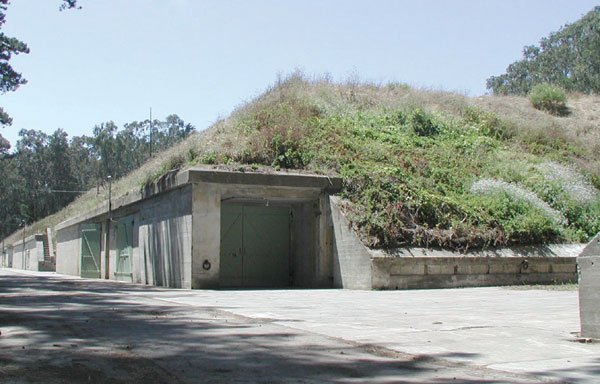Like a lot of wine lovers, I’ve been fortunate enough to have
accumulated some nicely crafted wines, vintages that show promise
of improving with age and bottle time. It became obvious that
storing them in the same cupboard with our Two Buck Chuck
collection wasn’t going to do them any favors. So we started
looking about for ways to store our liquid treasures in a manner
that will protect them from harm.
Like a lot of wine lovers, I’ve been fortunate enough to have accumulated some nicely crafted wines, vintages that show promise of improving with age and bottle time. It became obvious that storing them in the same cupboard with our Two Buck Chuck collection wasn’t going to do them any favors. So we started looking about for ways to store our liquid treasures in a manner that will protect them from harm.
Wine is a fairly fragile beast. It doesn’t like temperature swings, humidity variations, and it hates harsh light and vibration. (Come to think of it, I’m kind of like that, too.) Experts say that ideal wine storage conditions include a temperature of between 55 and 59 F and humidity of 70 to 90 percent. A dark place is best, one insulated from frequent movement (a tough order in our earthquake-prone region).
Centuries ago, Europeans discovered that natural caves exhibit just those properties and began using them for storage of wine. But what do you do if you don’t happen to have a cave under your house? There are several solutions. If your home has a basement, a dark closet can be converted to a makeshift wine cellar. An inside closet in the house will do in a pinch; this is an area that usually sees the least temperature variation. There are also dedicated wine coolers on the market. These are small refrigerators that keep temperature and humidity under control and utilize tinted glass doors to both display and protect the wine.
Restaurants and serious collectors have need for greater storage capacity, and in San Francisco, several businesses maintain climate-controlled wine storage and rent out space therein. Most of these are located in public storage businesses, and they rely on mechanical means to maintain the proper conditions. This makes them vulnerable to power outages and equipment failure.
The bluffs just south of the Golden Gate Bridge are a fascinating place to explore. Among the pine and eucalyptus trees of the Presidio of San Francisco are the ghostly remains of coastal defense gun emplacements – some of them dating back to the 19th century. The size of these facilities range from those meant for a single observer to concrete behemoths built as foundations for mammoth guns that fired projectiles 16 inches across. Walking and climbing around these structures is a fantastic history lesson – as a kid, my friends and I would have had a blast playing Army here.
Two 12″ mortar placements named Batteries Stotsenburg and McKinnon were built side-by-side here in the late 1890s. They were decommissioned after World War II, and the bunkers that were used to store ammunition and kegs of gunpowder were subsequently used to store Presidio base and park maintenance equipment.
I think that transition has a nice sort of swords-to-plowshares ring to it, but it gets better.
Christo Kasaris, a San Francisco businessman and wine lover, came across the bunkers one day and the proverbial light bulb appeared above his head. He thought the structures might be ideal for storing wine. So he put some instruments in them to measure the conditions, and lo and behold: the temperature hovers at 57 to 58 degrees, humidity is in the high 70 percent range, there is no traffic nearby to cause vibration and when the doors are closed, it is very, very dark in there.
The bunkers were constructed at a time when no corners were cut on military installations. These babies were built to last, and considering the explosive nature of the materials they were intended to store, that was probably a wise choice. On what was originally flat ground, the Army built the bunkers and covered them with three feet of concrete and 23 feet of earth.
Presidio Wine Bunkers opened in late 2003 and became an immediate success. General Manager Mark Steele told me that the facility now has more than 50 clients, from private collectors to lounges and restaurants that store from between four and 500 cases. “Currently we utilize about 8,000 square feet,” Steele says. “We have an exclusive lease option on the bunkers, and our ultimate capacity is vast.”
It would be difficult to envision a safer place to keep a wine collection. After all, these bunkers survived the 1906 and 1989 earthquakes without even really noticing them. The Wine Bunkers are the only storage facility in the city that does not rely on mechanical means to maintain climate control. And that makes them environmentally friendly as well.
Very few modifications were made to the historic structures, and separation of each client’s space is accomplished using a unique, expanding metal-frame system that does not impact the buildings in any way.
Soon, the bunkers may be a favorite hangout among the city’s wine crowd. Steele says that an alcove of the bunkers will soon be outfitted as a comfortable, fully equipped tasting area where clients and their companions can relax and check on the progress of their liquid assets. What a grand and delicious irony that will be, turning a place that was meant to house weapons of mass destruction into a venue where people can enjoy one of the sublime, peaceful products of a refined civilization.











